The winner – Mailchimp
Life-changing superhero
In this comparison, Mailchimp wins seven out of eleven rounds. Two rounds end in a tie, and there is only one aspect where Mailerlite outperforms Mailchimp. Continue reading to learn about the cases where Mailchimp outperforms Mailerlite and why.
What Mailchimp features are better than Mailerlite
- Getting started experience
- Marketing automation
- Customer segmentation capabilities
- Ecommerce analytics
- Compatibility with other marketing channels and integrations
- Very strict account confirmation process
- Less automation triggers, less templates
- There is no pre-built segments. Very basic segmentation criteria
- Basic analytics
- Less integrations and no SMS
Email marketing is one of the activities you need to get right if you want your business to prosper.
With the right software, you can collect valuable leads and nurture them into customers, keep your subscribers in the loop about your products, and drive sales through personalized email campaigns.
MailerLite and Mailchimp are two great options if you’re looking for an email marketing tool to scale your business. Both tools have their advantages and disadvantages, and in the following paragraphs we will take a closer look at them to help you decide if either of them is right for you.
MailerLite vs Mailchimp: Quick overview
With a G2 rating of 4.7/5, MailerLite is a reliable email marketing tool that can be used by marketers to quickly design email marketing campaigns. This email marketing tool is well-organized and intuitive, making it easy for you to get started with your campaigns in no time.
Mailchimp is a more advanced email marketing software that appeals to marketers who love data. Rated 4.4/5 on G2, Mailchimp’s analytics-driven approach makes it easy to segment users and gain deep audience insights to improve your marketing campaigns.
In this MailerLite vs Mailchimp post, we will examine the features, ease of use, pricing, and support provided to customers to help you choose the best tool for your email marketing needs.
MailerLite vs Mailchimp comparison: Feature by feature
Let’s compare the key features of these tools to get a better understanding of their strengths and weaknesses.
Ease of getting started
Both MailerLite and Mailchimp market themselves as easy-to-use email marketing software. But which one is great for beginners?
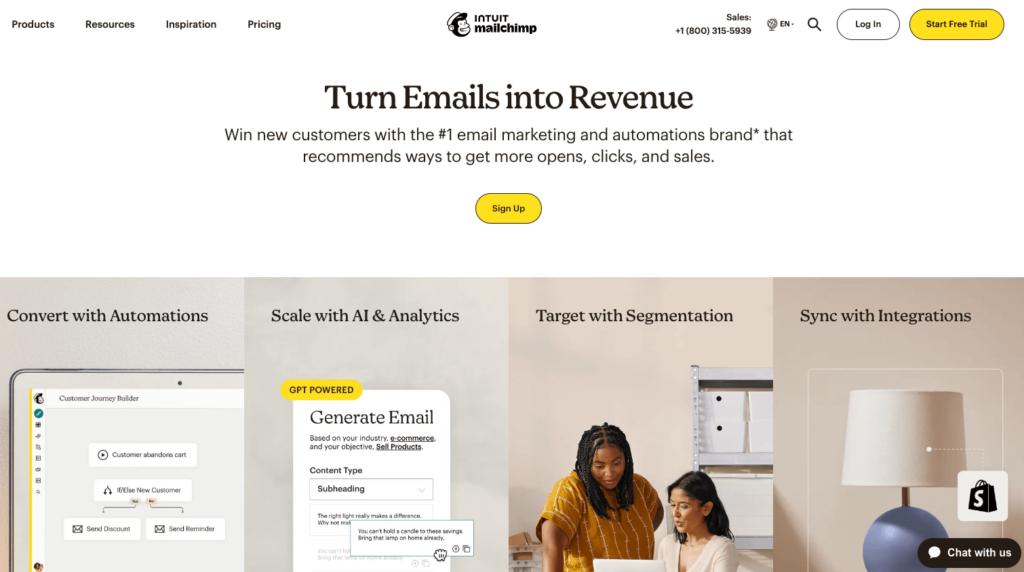
While both tools are pretty easy to use, Mailchimp has a slight edge when it comes to the ease of getting started.
Even though the icons on Mailchimp’s menu can seem confusing at first, you can easily find out what each icon does by hovering over it.
Mailchimp also has user manuals and articles on its Mailchimp 101 page to help beginners discover how to use the software.
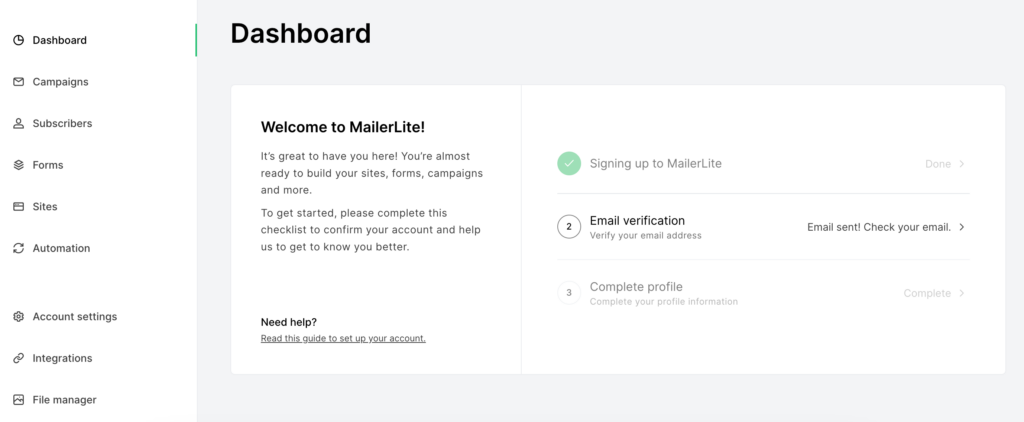
MailerLite has a cleaner interface than Mailchimp and the platform itself is less complex, so there are fewer sections in the settings and everything is reachable within a few clicks.
Both tools have created a top-notch first user experience. They are intuitive and very well-organized. So this aspect isn’t crucial when choosing which tool is better for you.
Building an email campaign
With the ease of getting started out of the way, let’s now examine the campaign-building capacity of MailerLite vs Mailchimp. Ideally, you want your preferred tool to have beautiful, customizable templates you can use to build a campaign in minutes.
Mailchimp has 100+ templates you can use to quickly build an email campaign. These templates are professional-looking and mobile-responsive. The big problem is that you only get six basic templates in the free plan.
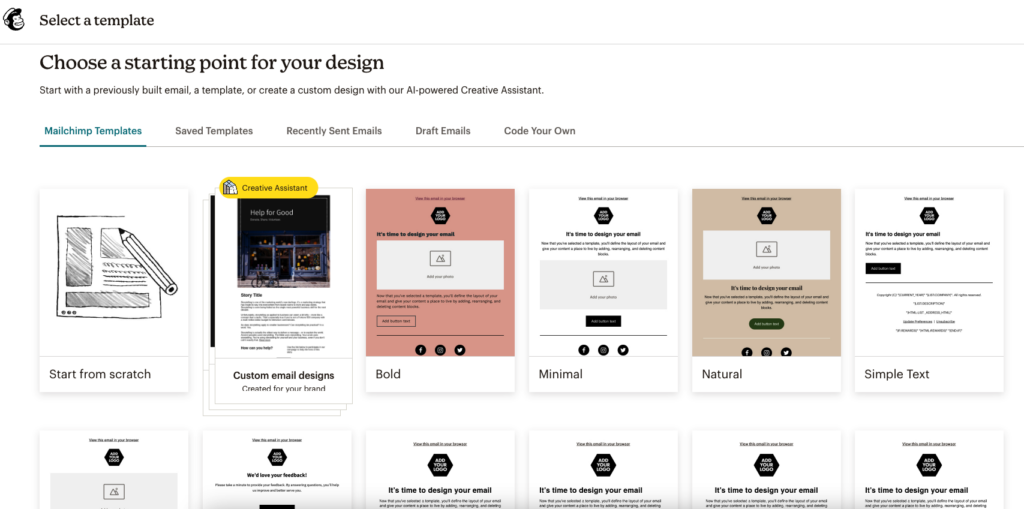
On Mailchimp, you will find two email editors available. Both of them are great. You will find features that make ecommerce marketers’ lives easier, such as a dynamic content block, subject line recommender, survey option, and many others.
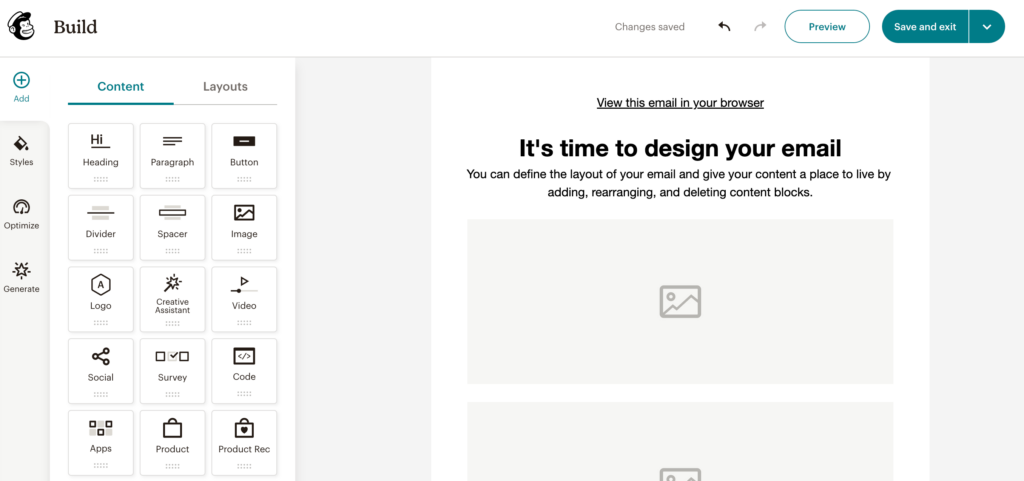
Here are some other perks that we found on Mailchimp:
- After you add your brand assets to Mailchimp’s content section, your logo and other brand attributes get automatically added to all emails. That’s a very nice and time-saving feature.
- Mailchimp offers 25 tokens of inbox preview on different devices which is provided through its integration with Litmus. For any extra tokens, you will be asked to pay Litmus.
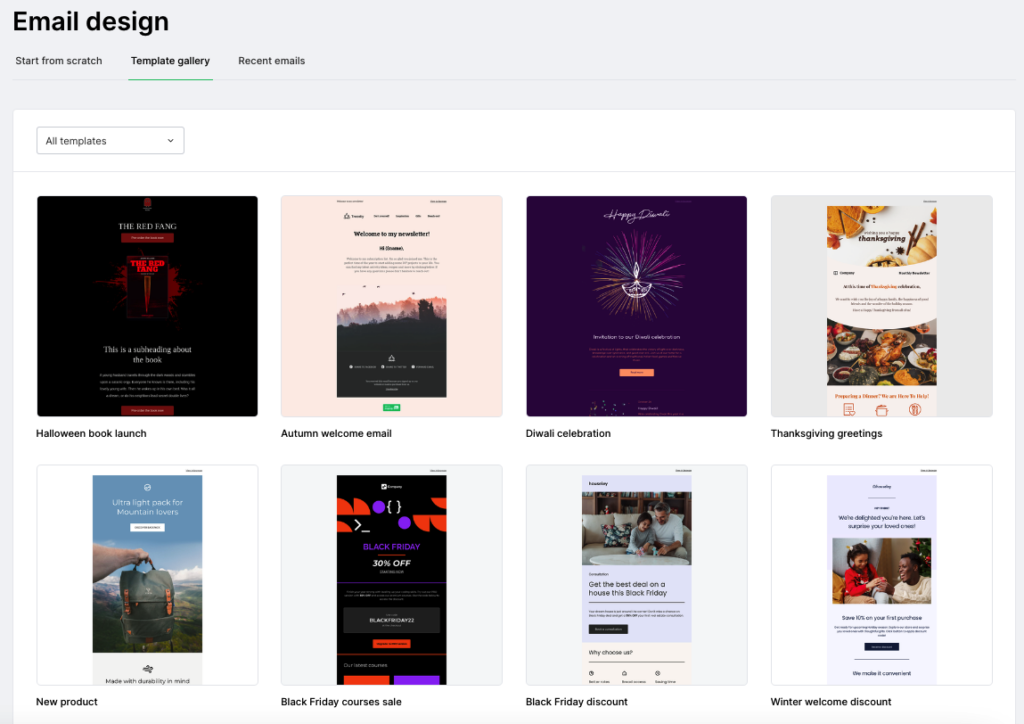
MailerLite doesn’t have as many templates as Mailchimp does, but the designs are professional and modern looking. Building a campaign using these templates is easy since they provide a lot of customization options. If you do not find what you’re looking for, you can upload your design.
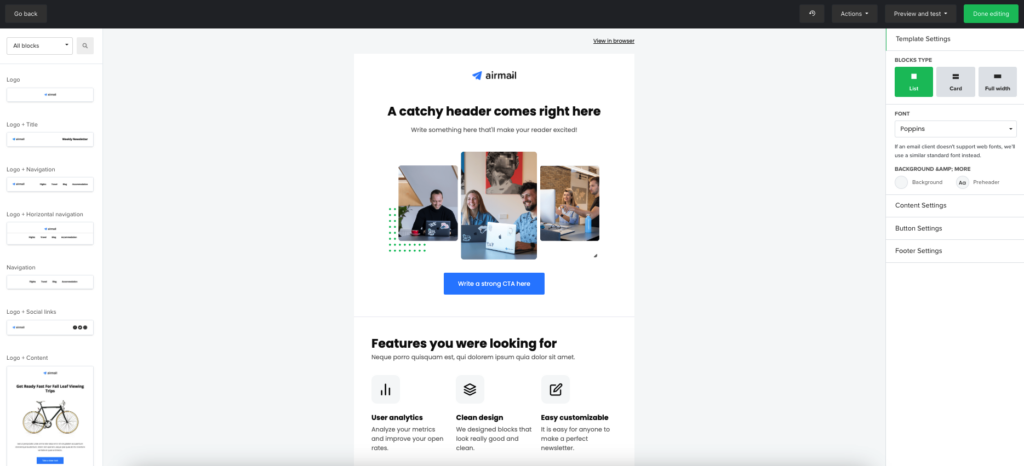
Other than that, Mailerlite also provides features for ecommerce owners. For example:
- The ability to automatically pull the products with their details from the store to your email.
- Well-designed product content blocks.
- Auto-resending campaigns. Mailchimp doesn’t have this.
Both tools have a good number of templates to choose from and countless editing options. Also, they’ve both locked their email templates under the paid plan chain.
However, Mailchimp has more ecommerce-oriented functionality and at least basic templates on the free plan.
Marketing automation
Let’s face it, anyone who signs up for email marketing software might want to run email campaigns on autopilot. By setting specific campaign triggers, you can deliver targeted communication to your subscribers and push them down the sales funnel.
So, which tool between MailerLite vs Mailchimp has the best marketing automation features? Let’s find out.
Both platforms offer visual marketing automation workflows. In fact, they look very similar to each other and other platforms.
MailerLite has a variety of automation workflows that are triggered by specific events, such as a user joining a specific group, a customer abandoning a cart, or the anniversary of an important date.
The pre-designed workflows are intuitive and allow you to add or delete steps into the sequence or modify the decisions of the flow.
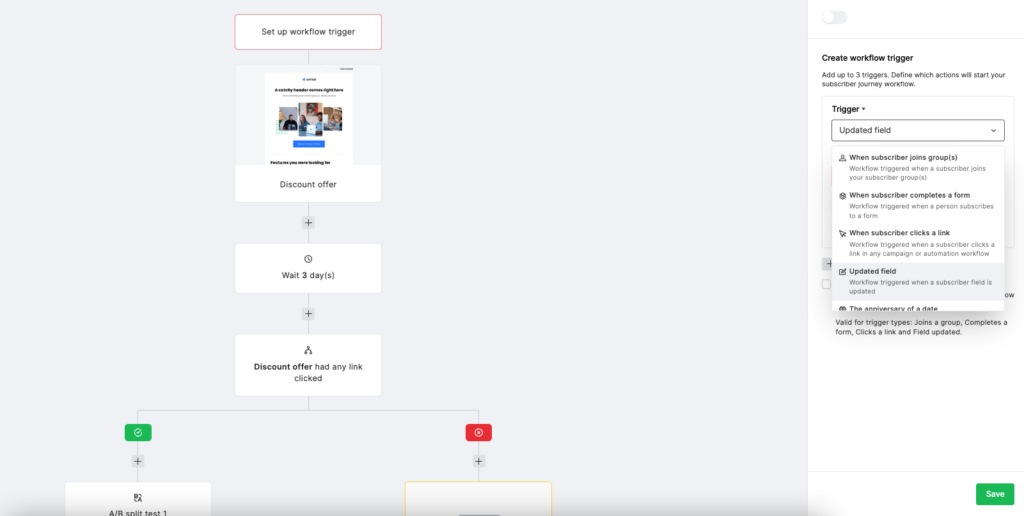
What stands out about MailerLite is that the tool allows users to create multi-step automation on the free plan. That being said, you will need to be on the paid plans to use the multi-trigger automation feature that allows multiple entry points for one workflow.
Mailchimp supports a wider array of triggers, including shopping behavior, for its automated workflows. The workflows are simple but you can access more complex ones when you upgrade your plan.
Mailchimp’s free plan only allows you to create one-step automation such as welcome emails, abandoned cart reminders, and order notifications.
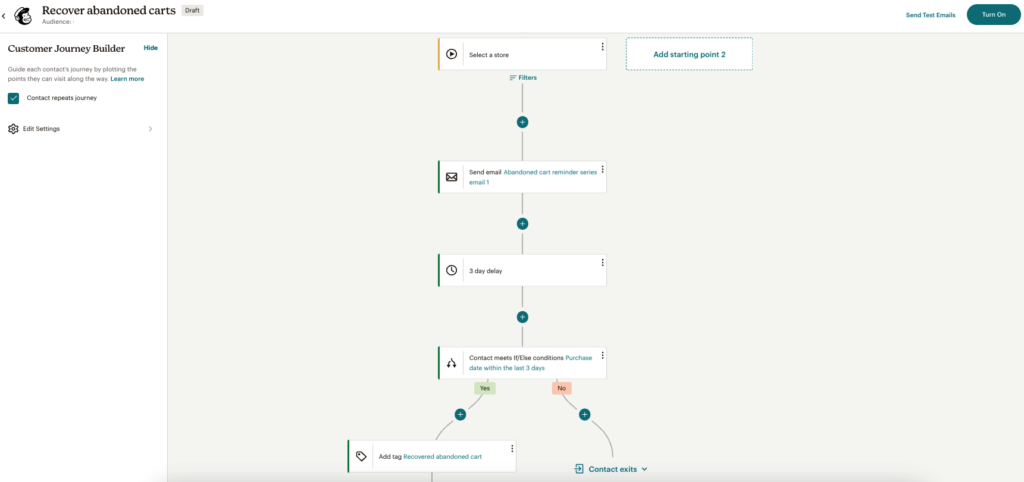
You’ll have to upgrade to the standard plan to design multi-step automation workflows such as onboarding series, nurturing campaigns, and other event-based workflows.
Mailchimp takes this round, because it offers more flexibility and more robust automation.
Signup forms and landing pages
Next up on our MailerLite vs Mailchimp comparison guide is assessing the signup forms and landing pages provided by these email marketing platforms.
Mailchimp provides almost every type of form you’d want on your website. The tool allows you to create popup, signup, and embedded forms for your website.
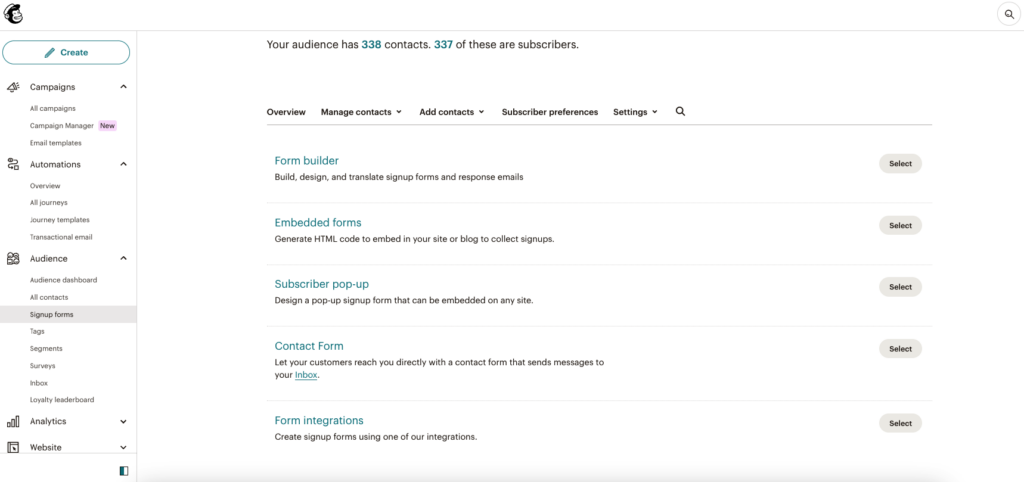
However, creating these forms with Mailchimp is tedious since you have to build everything from scratch. Mailchimp doesn’t offer pre-built form templates like the best Mailchimp alternatives.
Luckily, creating forms is much simpler with MailerLite.
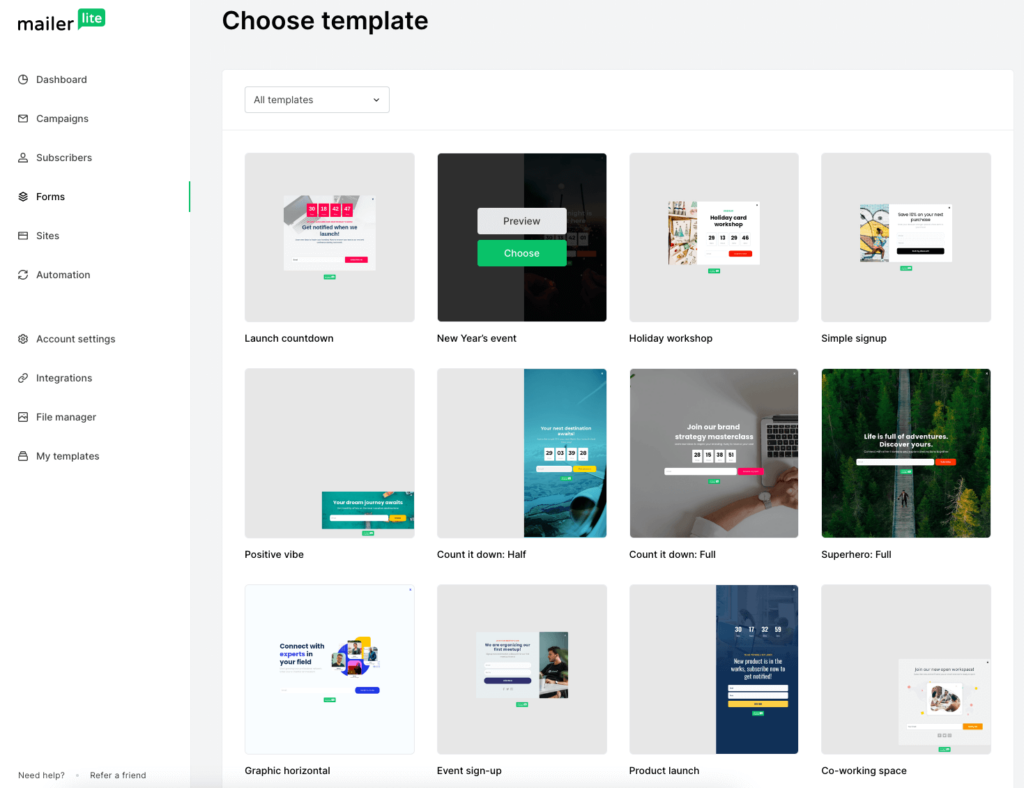
Like other MailerLite features discussed in this post, their forms are simple to design and can easily drive lead generation. MailerLite also allows you to improve the performance of your forms through A/B testing with real-time performance metrics.
What’s more, you can also use MailerLite to create landing pages to attract and convert your visitors.
MailerLite wins this round because of the ease of designing signup forms and landing pages.
Segmentation
One thing email marketers appreciate is audience segmentation. By grouping users based on specific characteristics, you can send more targeted emails to achieve your goals.
Here’s how these two platforms compare when it comes to audience segmentation.
Mailchimp’s audience segmentation is strong with a very wide range of rules to choose from. But there are only three audiences ready for use. You have to create the others by yourself. Each segment can take up to five conditions, which is enough for most cases.
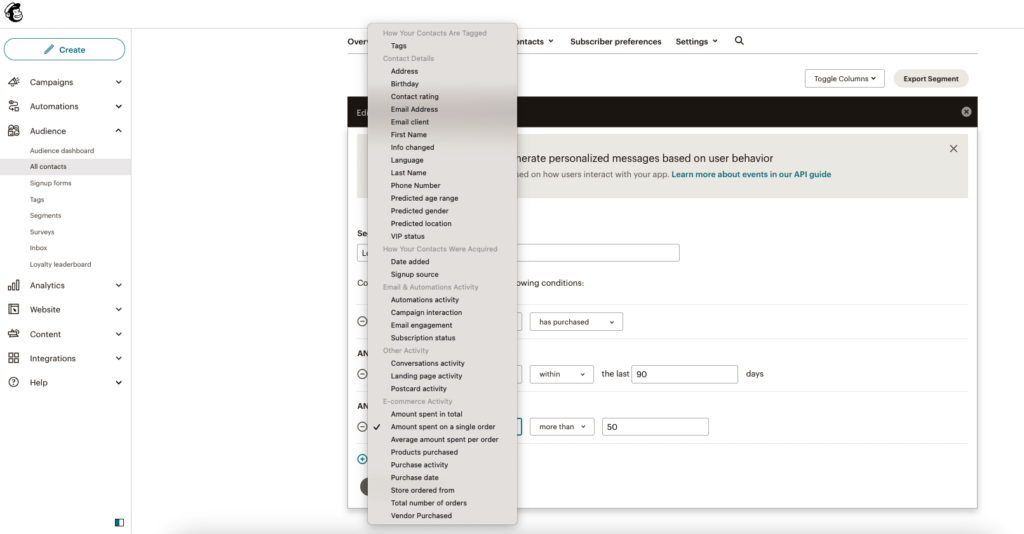
Its predictive segmentation tools allow you to target users with a high likelihood to buy and send them tailored messages to move them further down the funnel.
However, you should bear in mind that Mailchimp’s contact lists are siloed, and you can be charged twice for the same contact on a different list.
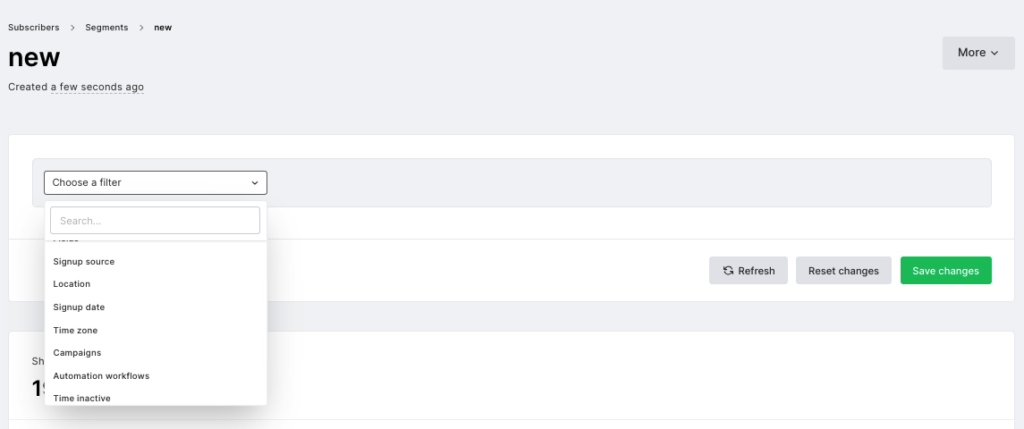
MailerLite also offers segmentation but doesn’t provide any ready-made segments and all the rules are related to customer data and email engagement. That said, MailerLite doesn’t provide segments based on onsite behavior, lifetime value, and purchase behavior.
However, with MailerLite you don’t have to worry about repeating customers on your lists. You won’t be charged twice for them.
Mailchimp has an edge over MailerLite as it comes with robust segmentation capabilities and a few ready-to-use templates that simplify the audience segmentation process.
Analytics
Our comparison guide between Mailchimp vs MailerLite will not be complete without assessing their reporting capabilities. Here’s what you can expect when you use either of the platforms for your email campaigns.
Mailchimp’s reporting tracks a wide array of metrics from the standard open and click-through rates to advanced landing page and social media engagement rates, geo-location and forwarded email performance. Also, it offers some very valuable insights in its comparative reports, but they are available only for Premium plan users.
For ecommerce insights, you have to connect your Mailchimp account to your ecommerce platform.
MailerLite has a simple reporting dashboard that enables you to track the usual campaign metrics such as opens, clicks, devices, unsubscribes, etc. You can also connect it to your ecommerce store for standard purchase tracking.
Both these email marketing tools integrate with Google Analytics for better reporting.
Mailchimp is the clear winner in this category. It has extensive reporting capabilities, especially with the premium plans. They also give smart recommendations to help you improve your email campaigns.
Customer support
Which email provider between MailerLite and Mailchimp offers the best support?
While Mailchimp is one of the popular email service providers, customer support is their biggest letdown. Mailchimp’s free plan users only receive email support for the first 30 days.
Essential plan users can access email and live chat support 24/7. To get phone support, you need to be on the premium plan which starts at $350 per month.
We tried to contact the support agents via live chat—they took 2-3 minutes to respond and were very polite and helpful.
When it comes to Mailerlite, customer support looks very similar. Email and chat help is available for the first 30 days for free users. For paying customers, MailerLite offers email support 24/7 and for higher tier plan users, there’s— 24/7 live chat. However, bear in mind that MailerLite doesn’t offer phone support with any of its plans.
The table below summarizes the support provided by the two tools.
Mailchimp is the winner, because it’s always better to write via live chat and get the answer immediately, and on Mailchimp more users have this possibility.
Integrations
One of the crucial things you need to consider when choosing an email marketing tool is how it integrates with other software. Both MailerLite and Mailchimp integrate with common business software to help you run your online campaigns effectively.
MailerLite doesn’t support as many integrations as Mailchimp but still integrates with all the vital software you need for your online campaigns.
In total, MailerLite has 140 integrations, including CRMs like HubSpot and Salesforce, ecommerce platforms like Shopify and WooCommerce, and forms like JotForm and AgileForms.
MailerLite has a rating of only 2.4 stars and 2.7 stars on Shopify and WooCommerce, respectively. Based on this, we can say that MailerLite is not the best option for ecommerce users.
On the contrary, Mailchimp has a total of 318 integrations to allow you to extend your marketing functionality by ensuring data flows seamlessly between the apps.
Other useful Mailchimp integrations include:
- Stripe
- QuickBooks
- Firebase
- Canva
- Typeform
- Chargebee
Mailchimp has better ratings than MailerLite on both Shopify and WooCommerce. It’s rated 3.5 stars on Shopify and 3.6 stars on WooCommerce, making it a better option for ecommerce businesses than MailerLite.
Mailchimp wins this round because it has more integrations and has been rated positively by ecommerce users.
Compatibility with other channels
Do any of these tools support other marketing channels beyond email?
While email service providers predominantly use it as their mode of communication, it would be helpful if the tool would support other channels to help you provide your customers with an omnichannel messaging experience.
There are many different marketing channels connected to Mailchimp, including Facebook, Instagram, Google Analytics, text messages, and others. However, there are no in-house web push notifications. To send them, you will need an integration with third-party providers.
MailerLite only supports Facebook custom audiences, but this feature is only available in the Advanced plan.
While neither tool support web push notifications, Mailchimp has many other channels connected to it that allow marketers to expand their reach.
Price comparison
Before deciding the winner of our MailerLite vs Mailchimp comparison, let’s first review the pricing of these two email marketing tools.
The tables below show the popular plans provided by them and their cost.
Mailchimp’s free plan allows users to send 1000 monthly emails and manage only one audience.
Customer support is very limited with Mailchimp’s free plan since users can only access email support for 30 days.
Other features provided in the free plan include:
- Limited pre-built email templates
- Basic reporting and analytics
- Forms and landing pages
- Creative Assistant
- Integration with other software
After the free plan, Mailchimp has an Essentials plan that goes for $13 per month for up to 500 subscribers. The plan provides access to all the features of the free plan and the following useful additions:
- Assisted onboarding
- Role-based access (2 roles)
- No Mailchimp branding
- A/B testing
- Email scheduling
- Automated customer journeys
As you can see, the Essentials plan has some of the important features you need to run a successful email campaign. The cost of Mailchimp Essentials increases as you add more subscribers, eventually reaching $800/mo for up to 100,000 subscribers.
Mailchimp’s Standard plan provides everything in the Essentials plan and the following additional features:
- Enhanced automated customer journeys
- Custom coded templates
- Send time optimization
- Predictive segmentation
- Content optimizer
- Dynamic content
- Campaign manager
After this, we have the Premium plan that includes everything in the Standard plan and the following added features:
- Multivariate testing
- Comparative reporting
- Advanced segmentation
- Phone support
This plan starts from $350 per month—a huge jump from the Standard plan.
Compared to Mailchimp, MailerLite’s free plan has more freebies as it allows users to send up to 12,000 emails a month.
Free plan users can access 24/7 email and chat support but only for the first 30 days after signing up.
The other features that users in the free plan enjoy include:
- Drag-and-drop editor
- Email automation builder
- Free websites
- 10 landing pages
- Signup forms
MailerLite’s upgrade to the free plan is the Growing Business plan that goes for $9 per month. This plan gives users access to the following features in addition to everything in the free plan:
- Unlimited monthly emails
- 24/7 email support
- Sell digital products
- Unlimited templates
- Dynamic emails
- Auto resend campaign
- Unlimited websites and blogs
- Unsubscribe page builder
Next, we have the Advanced plan that provides all the features in the Growing Business plan, plus:
- Facebook integration
- Custom HTML editor
- Promotion pop-ups
- Multiple triggers in automations
- Preference center
- 15% off on Google Workspace
Marketers looking for more features than what’s provided in the Advanced plan can sign up for the Enterprise plan which provides:
- Dedicated success manager
- Dedicated IP and deliverability consultation
- Custom landing page design
- Custom newsletter design
Summary: which one wins?
So who is the winner of our MailerLite vs Mailchimp comparison?
Let’s review the table below to find out.
3.9
4.5
500 subscribers – $0
1,000 subscribers – $15
5,000 subscribers – $39
10,000 subscribers – $73
50,000 subscribers – $289
100,000 subscribers – $440
500 subscribers – $13
1,000 subscribers – $27
5,000 subscribers – $75
10,000 subscribers – $110
50,000 subscribers – $385
100,000 subscribers – $800
– 12,000 email sends
– Unlimited audiences
– 1 website
– Up to 10 landing pages
– Unlimited popups
– Segmentation
– Limited automation features
– Full reporting
– Free trial is for 30 days, you can test out the majority of paid features except for multivariate testing, advanced segmentation and comparative reporting.
– 1000 email sends/mo
– A few basic email templates
– 30 days email support
– Very easy to use even for beginners
– The price is very affordable
– Nice and clear design
– Beautiful email and landing page templates
– A lot of nice elements to include in your emails and signup forms
– The tool has a very wide range of features
– Mailchimp has a lot of integrations and can be easily integrated in any toolkit
– The tool is user friendly
– Few integrations with ecommerce platforms,
– Strict new account approval process
– Lack of advanced reporting and automation features
– Mailchimp charges for email duplicates, so you can’t have the same subscriber in the different lists, or you pay extra for it
– Very limited Free plan, and paid plans get expensive quickly
– Email templates available on Free plan are too basic for current ecommerce needs, so it’s almost impossible to use Mailchimp for free
Bloggers, solopreneurs, non-profit organizations, startups, complete email marketing beginners
Solopreneurs, startups, bloggers, non-profit organizations
Ecommerce businesses, experienced marketers that wear many different hats at their daily work
Ecommerce stores that are in their active growth stage
After comparing and analyzing the key features of these two email marketing platforms, Mailchimp emerges as the outright winner.
MailerLite puts up a good fight, coming in as the better option for signup forms and landing pages, and also is the better option for ecommerce beginners, because it’s more affordable.
However, Mailchimp triumphs in other crucial categories and wins overall as the more complete platform.
This victory solidifies Mailchimp’s position as one of the leading email marketing platforms you can use to engage your audience through email communication, and achieve your business goals.
Read full reviews
Related picks for you
Our team strives to be accurate and unbiased in reviewing email tools. However, we recognize that mistakes can happen, and it’s essential for us to stay up to date. If you come across any errors or things that need to be reviewed again, please let us know.





Leave a Reply